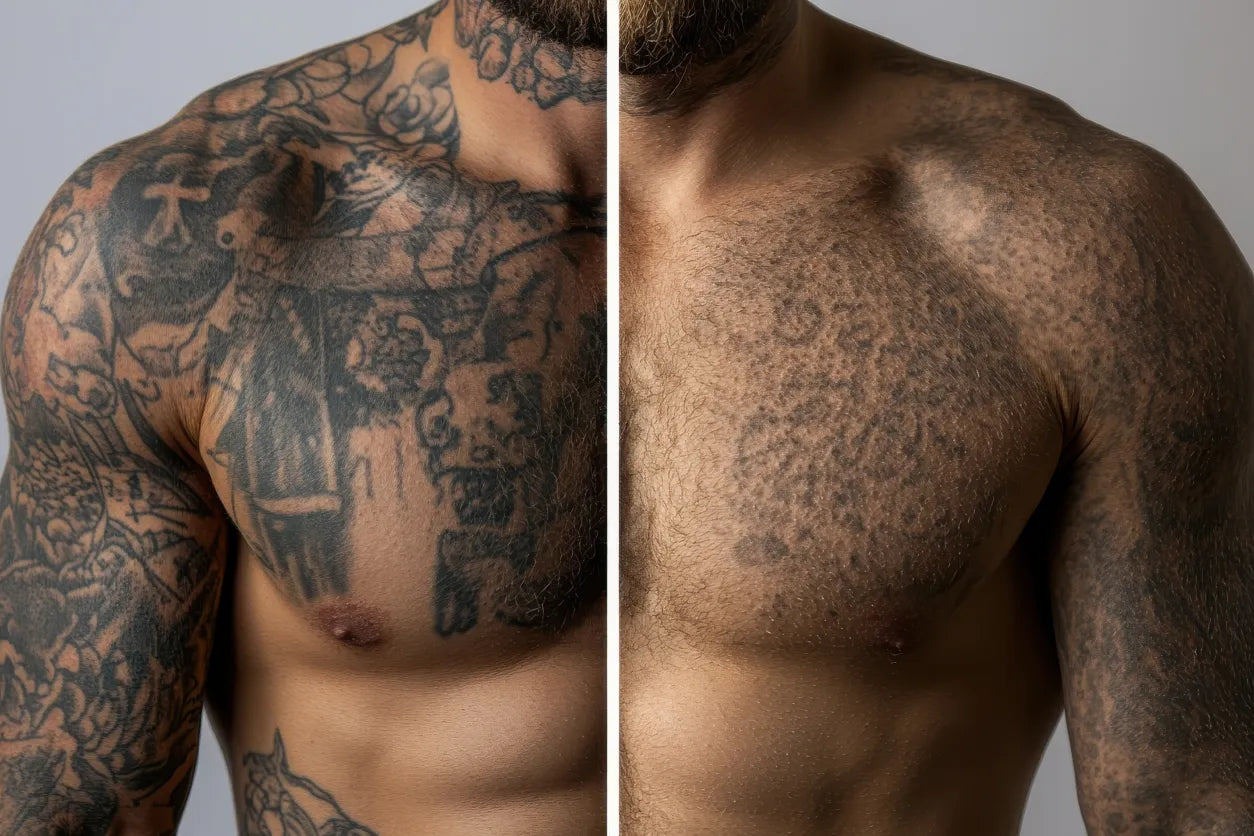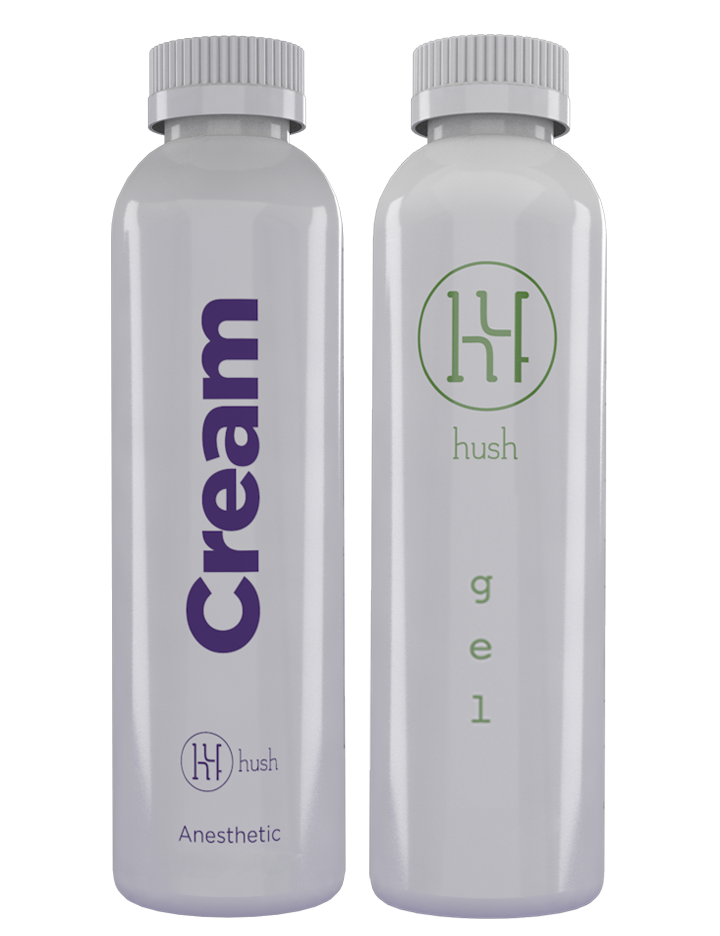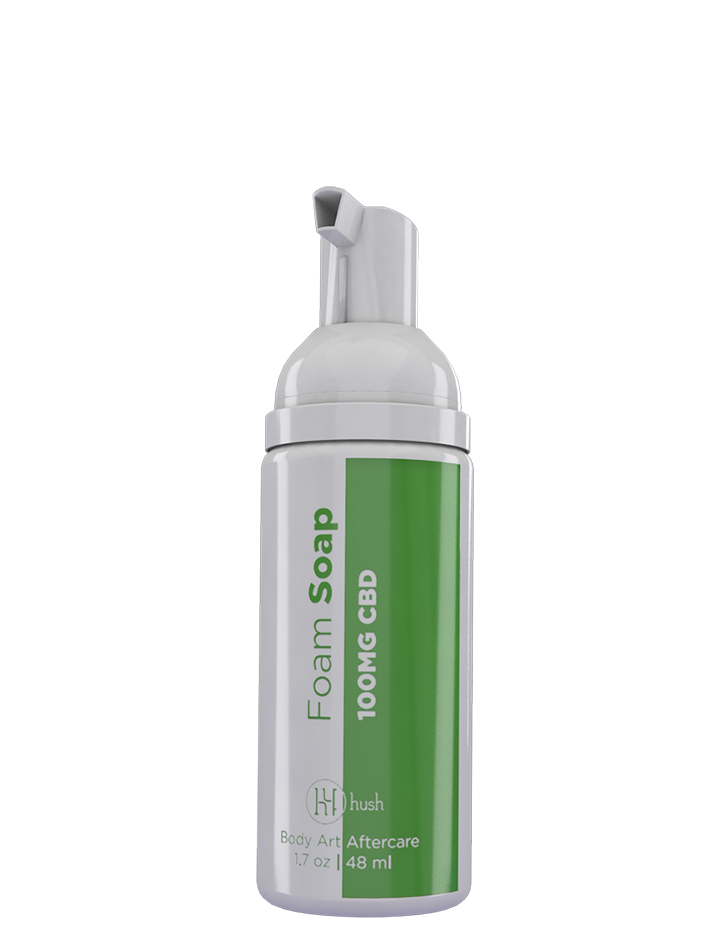Got a tattoo that’s lost its shine? Tattoos are meant to be forever, but sometimes, they can fade faster than expected. If your formerly bold ink looks a little dull, you might be wondering what went wrong.
Let’s explore eight common reasons tattoos fade—and what you can do about it.
1. Poor Aftercare
Proper aftercare is crucial for keeping your tattoo vibrant. Fresh tattoos are open wounds. They need TLC to heal properly. Ignoring aftercare instructions can cause scabbing, peeling, and uneven healing, making your tattoo look patchy and faded.
Aftercare is the easiest thing to control, and it sets the foundation for everything that happens to your tattoo in years to come. If you drop the ball while your tattoo is still healing, there's not much you can do to restore it to its intended glory. It's super important to listen to everything your artist says.
How To Fix It
Follow your tattoo artist’s aftercare guide. If you ever have any questions, don't make any assumptions. Your artist would rather you call or text them with every question you have than to assume something and make a mistake—trust us, you're not bothering them.
Use a tattoo-safe moisturizer like HUSH tattoo aftercare balm. Keep your tattoo covered for as long as your artist recommends, never pick scabs, and don't scratch it no matter how itchy it gets.
2. Sun Exposure
The sun is your skin's worst enemy. UV rays break down tattoo pigments, causing fading, especially with brighter colors like red, yellow, and orange. Even black ink can fade into a blurry gray with too much sun exposure.
How To Fix It
Apply broad-spectrum sunscreen (SPF 30 or higher) before going outside. Your skin needs sunscreen even if you don't have any tattoos. Sunscreen can protect against skin cancer, which is the most common type of cancer. It's a good idea to use sunscreen every day even if you don't have any tattoos in visible places.
3. Dry Skin
Dry skin can make your tattoo look dull and lifeless. Proper hydration keeps your skin supple, helping your tattoo maintain its crisp lines and vibrant colors. Hydration is vital for your overall health. Your skin will look better, and in addition to that superficial benefit, your entire body will function better.
How To Fix It
Drink plenty of water. Hydration starts from the inside out. It's great to use lotion and moisturizing balms for topical skin protection, but they won't replace an adequate water intake. If you're not a huge fan of plain water, try electrolyte infused flavor packets to make your eight glasses a day a little yummier.
4. Friction and Clothing
Tattoos on high-friction areas like the wrists, ankles, or inner thighs are prone to fading faster. Constant rubbing from clothing, jewelry, or even bags can wear down the ink over time. Plus, what's the point of having a great tattoo if you're just going to keep it covered all the time?
How To Fix It
Choose tattoo placement wisely if longevity is a concern. If you always wear a watch on your left wrist, your left wrist probably isn't the best place for a tattoo. If you’ve already committed to a tattoo in that area, consider wearing your watch on the other side. It might get in the way a little at first, but you’ll get used to it.
If your tattoo is in an area where your bra strap normally sits, you may notice fading or wearing away in the area your bra strap normally covers. Consider swapping for something with softer, wider straps that will put less friction on your ink.
5. Poor Tattoo Application
Sometimes, tattoo fading is the result of a poorly done tattoo. Inexperienced artists may not deposit ink deep enough into the skin’s dermis layer, causing premature fading. Conversely, if your artist tattoos too deep, your tattoo will quickly look blotchy and worn out.
How To Fix It
Research and choose a reputable tattoo artist with a strong portfolio. Many tattoos look great when they're fresh, but that doesn't mean they're going to age well. Review your artist's work to see how it holds up several years down the line.
You can't guarantee that their clients took care of their tattoos as well as they should have, but you should definitely be able to spot a common theme of most clients experiencing a deterioration of the appearance of their tattoos.
6. Skin Type and Aging
Everyone’s skin is different, and factors like skin type, texture, and aging can affect tattoo longevity. Oily skin can cause faster ink dispersion, while aging skin naturally loses elasticity, making tattoos look less sharp.
How To Fix It
The skin is the largest organ of the human body. It needs just as much care as the organs you can't see. Despite the fact that your skin is literally right in front of your face, it's easy to forget just how much support it needs to stay healthy.
Take care of your skin with a consistent skincare routine. It doesn't need to be expensive. Skip gimmicky serums in favor of a simple, gentle, fragrance-free soap and moisturizer routine. If you have dry skin, gentle acid-based exfoliants can help your skin easily shed the dead layers and reveal healthy new skin underneath.
7. Rough Healing Process
If your tattoo gets infected, scabs too heavily, or you experience allergic reactions, the healing process can compromise your tattoo’s appearance. Infection and heavy scabbing are out of the ordinary, especially when you follow proper tattoo aftercare protocol.
Even if you do follow aftercare instructions, accidents can happen. Nobody plans to trip and scrape their new knee tattoo—it's what you do next that counts.
How To Fix It
Keep the tattoo clean with gentle, fragrance-free soap. Avoid swimming, saunas, and intense workouts until it’s fully healed. Never pick, peel, or scratch a healing tattoo. If the itching drives you crazy, try HUSH tattoo healing spray to dull the itchy sensation.

If you think you may be noticing signs of an infection, call your tattoo artist and then your doctor right away. If you catch it early, you can still preserve your health and protect your tattoo.
Remember: even if you think your tattoo looks completely healed, your body is still doing a lot of work behind the scenes. There's a reason why your tattoo artist writes you a prescription for protection that lasts so long.
8. No Touch-Up Sessions
Even the best tattoos need maintenance. After a few years, ink can naturally fade, lines can blur, and colors can lose their intensity. Touch-up sessions help restore your tattoo’s original glory.
Touch-ups can also fix tiny blips that happen as a normal part of the tattoo process. Maybe a little spot in a high-friction or high-movement area (like on a joint) didn't heal as perfectly as it could have. Your artist won't be surprised if it needs to be revisited.
How To Fix It
Schedule a touch-up with your original artist. Your original artist likely remembers the specific colors and techniques they used to create your tattoo. When you go back to the same person, they'll be able to recreate their own work much better than another artist who has to guess how to replicate the original work.
How Can I Prevent Tattoo Fading?
If you've noticed some fading on an older tattoo, it's time to enter damage control mode. Consistently caring for an old tattoo can restore some of its brightness and vitality without the need for another session in the artist's chair.
If you've neglected your tattoo for a while, it will probably never look absolutely perfect again, but it can look much better if you commit to making changes that prioritize the health of your skin.
Tattoo maintenance is a three-step process: hydrate, protect, and maintain.
- Hydrate: Drink water and moisturize your skin daily.
- Protect: Use sunscreen and avoid excessive sun exposure.
- Maintain: Schedule touch-ups when needed.
The best thing you can do for a tattoo that's seen better days is improve your care routine and wait a while. After a few months of consistent hydration and protection, you'll get a good idea of how your tattoo really looks under the best possible conditions.
If you still feel like you need a touch-up, it's best to do it when your tattoo is as healthy as can be. Your artist will be able to easily see what they're working with and they'll have a good idea of how your skin reacts to tattoos with time.
How To Design a Tattoo That Will Last a Long Time
If you're worried that your tattoo will fade or distort, the best place to start is by carefully planning your tattoo's longevity from the beginning. While proper aftercare is crucial, the design itself plays a massive role in how well your tattoo will age.
Choose the Right Style
Certain tattoo styles age better than others. Bold, traditional designs with strong outlines and minimal detail tend to last longer. Styles like American Traditional, Neo-Traditional, and simple blackwork tattoos age gracefully because of their high contrast and clear lines.
Avoid ultra-fine lines, intricate details, and delicate watercolor-style tattoos, as they can blur or fade faster. Skilled artists can often compromise between style and longevity by modifying techniques to make dainty or delicate designs last longer.
Pick a Good Placement
Where you put your tattoo affects its longevity. Areas prone to friction, stretching, and sun exposure can cause tattoos to fade or distort over time. Common high-wear areas include hands, feet, elbows, and the sides of fingers.
Upper arms, thighs, backs, and calves tend to be the most reliable spots. Areas like your palms, inner fingers, and soles, unless you’re ready for frequent touch-ups.
Use Bold Lines and Solid Colors
Thick lines and bold outlines provide structure to your tattoo, helping it maintain its clarity even as your skin changes. Similarly, solid colors last longer than soft gradients or light shading, which can fade into a muddy blur over time.
Stick with black ink or deep, saturated colors like dark blue, red, or green for maximum longevity. Deeper, richer colors often show up well on the majority of skin tones and age well on most people.
Keep It Simple
Complex designs with intricate details may look stunning at first, but they can become hard to read as the tattoo ages. Simplicity is key for a long-lasting tattoo. Think: bold symbols, geometric shapes, or straightforward designs.
A bold, minimalist rose will last much longer than a hyper-detailed floral scene, especially if each flower doesn't have a distinct outline. It's all about compromising. You shouldn't get a tattoo with a design or an aesthetic you don't like, but when you really love something, you want it to last forever. An experienced artist can help you find the right balance.
Consider Skin Changes
Your skin changes as you age. It stretches, sags, and wrinkles as proof of a life well-lived. A tattoo that looks great on youthful skin might not hold up well after 10 or 20 years. Consider how your design will adapt over time.
Avoid placing tattoos on areas prone to significant weight changes, like the stomach or upper thighs. Face tattoos can change significantly with time, especially on the forehead or around the eyes. Tattoos on top of the breast area tend to stretch, especially if you have children.
Work With a Skilled Tattoo Artist
A talented tattoo artist can make all the difference. They’ll understand how different design elements age and can suggest adjustments for longevity. Choose an artist with a strong portfolio and plenty of experience.
Keeping Your Tattoos Vibrant Forever
Tattoos are an investment in art, and with proper care, they can stay vibrant for decades. While some fading is inevitable, following these tips can slow down the process and keep your ink looking its best.

HUSH's tattoo aftercare kit contains everything you need to set your tattoo up for a healthy, vibrant future. Remember: tattoo care is skin care. Treat your tattoo well, and it will treat you well in return.
Sources:
Tattoo Aftercare Tips From a Dermatologist | Cleveland Clinic
Sunscreen | Skin Cancer Foundation
Water: How much should you drink every day? | Mayo Clinic
Tattoo Infection: Signs, Causes, Treatment & Prevention | Cleveland Clinic




